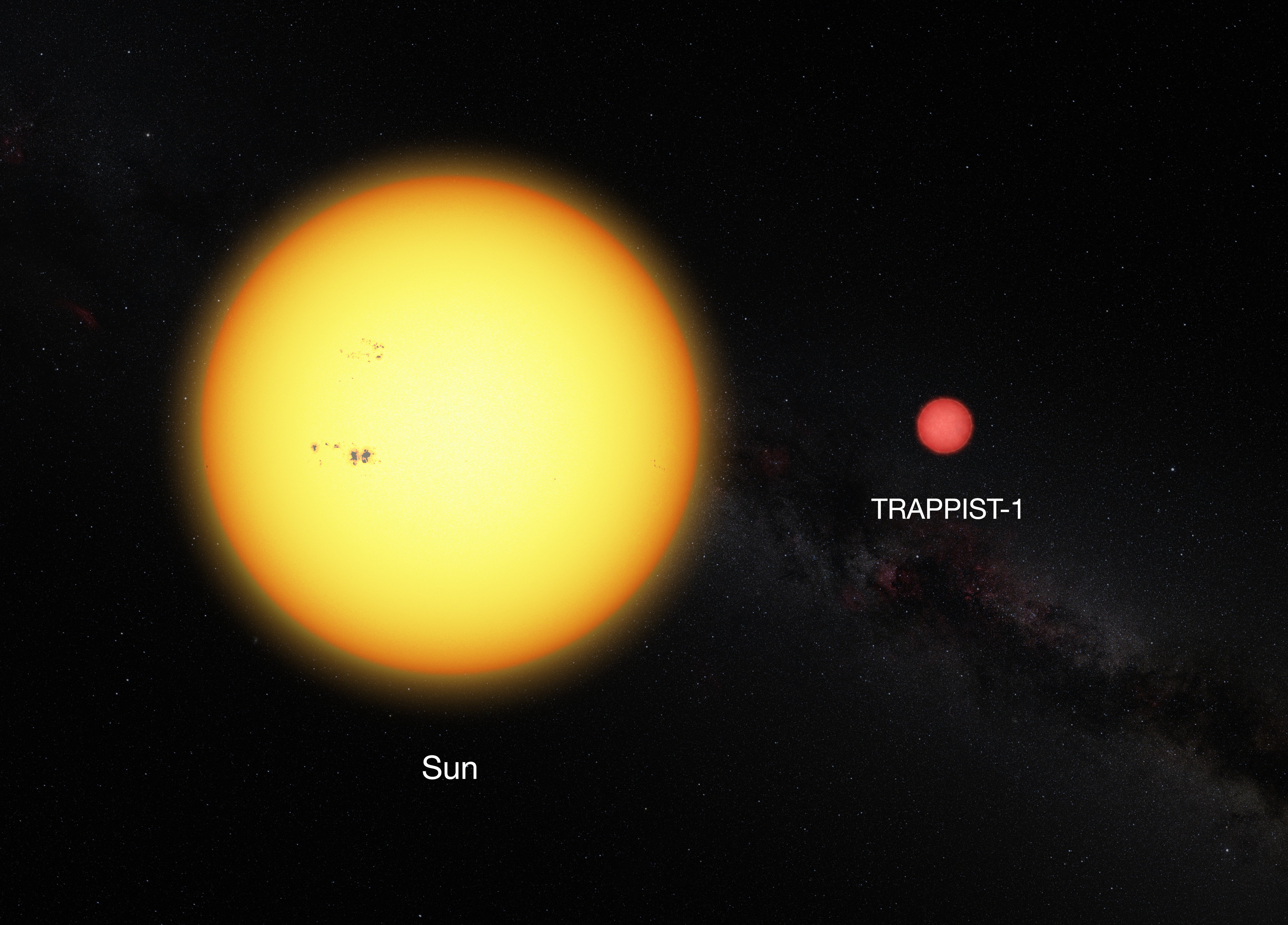Ultra-cool dwarf on:
[Wikipedia]
[Google]
[Amazon]
 An ultra-cool dwarf is a stellar or sub-stellar object of spectral class M that has an
An ultra-cool dwarf is a stellar or sub-stellar object of spectral class M that has an
 An ultra-cool dwarf is a stellar or sub-stellar object of spectral class M that has an
An ultra-cool dwarf is a stellar or sub-stellar object of spectral class M that has an effective temperature
The effective temperature of a body such as a star or planet is the temperature of a black body that would emit the same total amount of electromagnetic radiation. Effective temperature is often used as an estimate of a body's surface temperature ...
lower than .
This category of dwarf star
A dwarf star is a star of relatively small size and low luminosity. Most main sequence stars are dwarf stars. The meaning of the word "dwarf" was later extended to some star-sized objects that are not stars, and compact stellar remnants which ar ...
s was introduced in 1997 by J. Davy Kirkpatrick
J. Davy Kirkpatrick is an American astronomer at the Infrared Processing and Analysis Center at the California Institute of Technology in Pasadena, California. Kirkpatrick's research was named one of the top ten science accomplishments of the fi ...
, Todd J. Henry, and Michael J. Irwin. It originally included very low mass M-dwarf stars with spectral types of M7 but was later expanded to encompass stars ranging from the coldest known to brown dwarf
Brown dwarfs (also called failed stars) are substellar objects that are not massive enough to sustain nuclear fusion of ordinary hydrogen ( 1H) into helium in their cores, unlike a main-sequence star. Instead, they have a mass between the most ...
s as cool as spectral type T6.5. Altogether, ultra-cool dwarves represent about 15% of the astronomical objects in the stellar neighborhood of the Sun. One of the best known examples is TRAPPIST-1.
Models of the formation of planets suggest that due to their low masses and the small size of their proto-planetary disks, these stars could host a relatively abundant population of terrestrial Earth-like planets ranging from Mercury-sized to Earth-sized bodies, rather than a population of super-Earths and Jupiter-massed planets. The discovery of the TRAPPIST-1 planetary system, consisting of seven Earth-like planets, would appear to validate this accretion model.
Due to their slow hydrogen fusion
Stellar nucleosynthesis is the creation (nucleosynthesis) of chemical elements by nuclear fusion reactions within stars. Stellar nucleosynthesis has occurred since the original creation of hydrogen, helium and lithium during the Big Bang. A ...
, when compared to other types of low-mass stars the life spans of ultra-cool dwarves are estimated to be at least several hundred billion years, with the smallest among them living for about 12 ''trillion'' years. As the age of the universe
In physical cosmology, the age of the universe is the time elapsed since the Big Bang. Astronomers have derived two different measurements of the age of the universe:
a measurement based on direct observations of an early state of the universe, ...
is only 13.8 ''billion'' years, all ultra-cool dwarf stars are therefore relatively young. Models predict that at the ends of their lives the smallest of these stars will become blue dwarfs rather than expanding into red giant
A red giant is a luminous giant star of low or intermediate mass (roughly 0.3–8 solar masses ()) in a late phase of stellar evolution. The outer atmosphere is inflated and tenuous, making the radius large and the surface temperature around o ...
s.
Magnetic properties
After the detection of bursts of radio emission from the M9 ultracool dwarf LP in 2001, a number of astrophysicists began observation campaigns at theArecibo Observatory
The Arecibo Observatory, also known as the National Astronomy and Ionosphere Center (NAIC) and formerly known as the Arecibo Ionosphere Observatory, is an observatory in Barrio Esperanza, Arecibo, Puerto Rico owned by the US National Science ...
and the Very Large Array
The Karl G. Jansky Very Large Array (VLA) is a centimeter-wavelength radio astronomy observatory located in central New Mexico on the Plains of San Agustin, between the towns of Magdalena and Datil, ~ west of Socorro. The VLA comprises twent ...
to search for additional objects emitting radio waves. To date hundreds of ultra-cool dwarves have been observed with these radio telescopes and of these stars, more than a dozen radio-emitting ultra-cool dwarves have been identified. These surveys indicate that approximately 5-10% of ultracool dwarfs emit radio waves. These observation campaigns identified the noteworthy 2MASS J10475385+2124234, which has a temperature of 800-900 K making it the coolest known radio-emitting brown dwarf
Brown dwarfs (also called failed stars) are substellar objects that are not massive enough to sustain nuclear fusion of ordinary hydrogen ( 1H) into helium in their cores, unlike a main-sequence star. Instead, they have a mass between the most ...
. 2MASS J10475385+2124234 is a T6.5 brown dwarf that retains a magnetic field
A magnetic field is a vector field that describes the magnetic influence on moving electric charges, electric currents, and magnetic materials. A moving charge in a magnetic field experiences a force perpendicular to its own velocity and to ...
with a strength greater than 1.7 kG, making it some 3000 times more intense than Earth's magnetic field
Earth's magnetic field, also known as the geomagnetic field, is the magnetic field that extends from Earth's interior out into space, where it interacts with the solar wind, a stream of charged particles emanating from the Sun. The magneti ...
.
References
{{Exoplanet + *